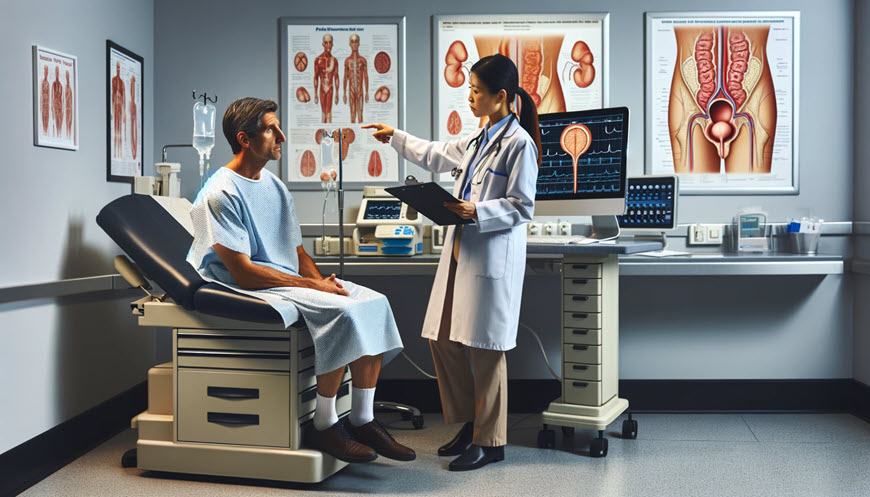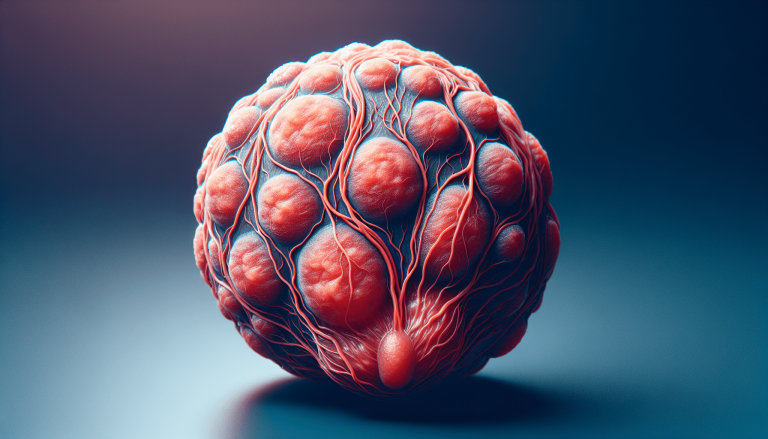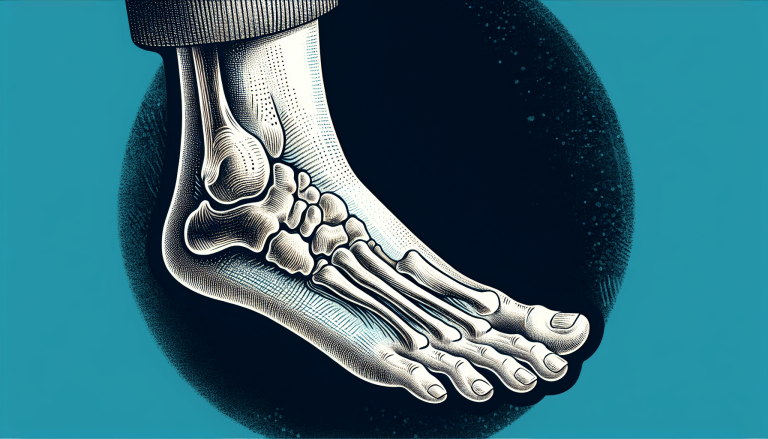What Is The Most Effective Treatment For Enlarged Prostate?
Have you ever wondered what the most effective treatment is for an enlarged prostate? If so, you’re not alone. Many men face the challenge of dealing with an enlarged prostate, also known as benign prostatic hyperplasia (BPH), and are searching for the best solution. In this article, we will explore various treatment options and evaluate their effectiveness, giving you the information you need to make an informed decision regarding your own health. So, let’s dive in and discover the most effective treatment for enlarged prostate.
Medication Options
Alpha-blockers
Alpha-blockers are a type of medication commonly prescribed to treat symptoms of an enlarged prostate. These medications work by relaxing the muscles in the bladder and prostate, making it easier to urinate. Alpha-blockers are usually the first line of treatment for mild to moderate symptoms of an enlarged prostate. They can provide quick relief and improve urinary flow. Some common alpha-blockers include tamsulosin, doxazosin, and terazosin.
5-alpha reductase inhibitors
5-alpha reductase inhibitors are another type of medication used to treat an enlarged prostate. These medications work by blocking the production of a hormone called dihydrotestosterone (DHT), which is responsible for prostate growth. By reducing DHT levels, 5-alpha reductase inhibitors can help shrink the prostate and relieve symptoms. Common 5-alpha reductase inhibitors include finasteride and dutasteride. This type of medication is typically recommended for men with a significantly enlarged prostate.
Combination therapy
In some cases, a combination of alpha-blockers and 5-alpha reductase inhibitors may be prescribed for more severe symptoms of an enlarged prostate. This combination therapy can provide the benefits of both medications, helping to improve urinary symptoms and reduce the size of the prostate. It is important to discuss with your doctor the potential benefits and risks of combination therapy, as well as any potential side effects or drug interactions.
Minimally Invasive Procedures
Transurethral microwave therapy (TUMT)
Transurethral microwave therapy (TUMT) is a minimally invasive procedure used to treat an enlarged prostate. During the procedure, microwave energy is delivered to the prostate through a catheter inserted into the urethra. This energy heats and destroys excess prostate tissue, helping to relieve urinary symptoms. TUMT is typically performed on an outpatient basis and can provide long-lasting relief from symptoms.
Transurethral needle ablation (TUNA)
Transurethral needle ablation (TUNA) is another minimally invasive procedure used to treat an enlarged prostate. In TUNA, low-level radiofrequency energy is delivered to the prostate through needles inserted into the prostate tissue. This energy heats and destroys the excess prostate tissue, reducing the size of the prostate and improving urinary symptoms. TUNA is generally well-tolerated and has a low risk of side effects.
Water-induced thermotherapy (WIT)
Water-induced thermotherapy (WIT) is a minimally invasive procedure that uses heated water to treat an enlarged prostate. During the procedure, heated water is circulated in a catheter placed in the urethra and prostate, causing the excess prostate tissue to be destroyed. WIT is a relatively quick and effective procedure, providing significant improvement in urinary symptoms. It is typically performed on an outpatient basis and has a low risk of complications.
Prostatic urethral lift (PUL)
Prostatic urethral lift (PUL), also known as UroLift®, is a minimally invasive procedure that uses small implants to lift and hold the enlarged prostate tissue away from the urethra. This helps to relieve the pressure on the urethra and improve urinary flow. PUL is a relatively quick procedure that can be performed under local anesthesia. It provides rapid symptom relief and preserves sexual function.
Rezūm
Rezūm is a minimally invasive procedure that uses the natural energy stored in steam to treat an enlarged prostate. During the procedure, steam is injected into the prostate tissue, causing the excess tissue to shrink and be reabsorbed by the body. Rezūm is a safe and effective procedure, providing long-lasting improvement in urinary symptoms. It is typically performed on an outpatient basis and has minimal side effects.

Surgical Procedures
Transurethral resection of the prostate (TURP)
Transurethral resection of the prostate (TURP) is a surgical procedure commonly used to treat an enlarged prostate. In TURP, excess prostate tissue is removed using a resectoscope inserted through the urethra. This allows for improved urine flow and symptom relief. TURP is considered the gold standard surgical treatment for an enlarged prostate and has a high success rate. However, it does carry some risks, such as bleeding and infection.
Open prostatectomy
Open prostatectomy is a surgical procedure performed to remove the entire prostate gland. It is typically reserved for men with significantly enlarged prostates or those with other urinary complications. Open prostatectomy requires a larger incision in the lower abdomen, and the recovery time is longer compared to other surgical procedures. However, it can provide long-lasting relief from urinary symptoms and is highly effective.
Laser surgery
Laser surgery is a minimally invasive surgical option for treating an enlarged prostate. There are different types of laser surgeries, including photoselective vaporization of the prostate (PVP) and holmium laser enucleation of the prostate (HoLEP). Laser surgeries use high-energy laser beams to remove excess prostate tissue and improve urinary symptoms. These procedures have shorter recovery times compared to traditional surgery and offer similar effectiveness.
Robotic-assisted prostate surgery
Robotic-assisted prostate surgery, also known as robotic prostatectomy, is a surgical procedure performed using a robotic system. This technology allows for precise removal of the prostate gland while minimizing damage to surrounding tissues. Robotic-assisted surgery offers several benefits, including smaller incisions, reduced blood loss, and faster recovery times. It is a highly effective treatment option for an enlarged prostate, especially for men with localized prostate cancer.
Lifestyle Changes
Diet modifications
Making certain changes to your diet can help manage the symptoms of an enlarged prostate. Avoiding foods and beverages that can irritate the bladder, such as spicy foods, caffeine, and alcohol, may help reduce urinary symptoms. Increasing your intake of fruits, vegetables, and fiber can promote overall prostate health and improve urinary function. It is also important to maintain a healthy weight, as obesity can worsen symptoms.
Exercise
Regular exercise can play a significant role in managing the symptoms of an enlarged prostate. Engaging in moderate-intensity activities, such as brisk walking, swimming, or cycling, can improve overall prostate health and promote urinary function. Exercise can also help maintain a healthy weight and reduce the risk of complications associated with an enlarged prostate.
Bladder training techniques
Bladder training techniques can help improve the control and function of the bladder. By gradually increasing the time between urination and using relaxation techniques, you can train your bladder to hold urine for longer periods. This can be particularly beneficial for individuals experiencing urinary urgency and frequency. Working with a healthcare professional or physical therapist specialized in bladder training can provide guidance and support in implementing these techniques.
Limiting alcohol and caffeine intake
Reducing the consumption of alcohol and caffeine can help alleviate urinary symptoms associated with an enlarged prostate. Both alcohol and caffeine act as diuretics, which can increase urine production and worsen urinary urgency and frequency. Limiting intake of these substances, especially in the evening, can decrease nighttime urination and improve sleep quality.

Natural Remedies
Herbal supplements
Herbal supplements, such as saw palmetto, are commonly used as natural remedies for an enlarged prostate. Saw palmetto extract has been shown to help reduce urinary symptoms and improve urinary flow. Other herbal supplements, including beta-sitosterol, pygeum africanum, and stinging nettle, may also have beneficial effects on prostate health. However, it is crucial to consult with a healthcare professional before starting any herbal supplement, as they may interact with other medications or have potential side effects.
Acupuncture
Acupuncture is an alternative therapy that involves the insertion of thin needles into specific points on the body. It is believed to help balance the flow of energy, or qi, in the body and promote overall health. Some studies suggest that acupuncture may help relieve urinary symptoms associated with an enlarged prostate. It is essential to seek out a qualified and experienced acupuncturist for safe and effective treatment.
Prostate massage
Prostate massage is a technique that involves the manual stimulation of the prostate gland. It is believed to help improve blood circulation, reduce inflammation, and alleviate urinary symptoms. Prostate massage can be performed by a healthcare professional or self-administered at home. However, it is important to consult with a healthcare professional before attempting prostate massage, as improper technique or overstimulation can lead to complications.
Saw palmetto extract
Saw palmetto extract is a popular natural remedy for an enlarged prostate. It is derived from the berries of the saw palmetto plant and has been used for centuries to alleviate urinary symptoms. Saw palmetto extract works by blocking the production of DHT, a hormone that contributes to prostate growth. It has been shown to improve urinary flow and reduce nighttime urination. However, it is important to consult with a healthcare professional before starting any herbal supplement.
Watchful Waiting
Monitoring symptoms
In cases where the symptoms of an enlarged prostate are mild and not causing significant disruption to daily life, watchful waiting may be recommended. Watchful waiting involves monitoring the symptoms over time to ensure they do not worsen or require immediate intervention. Regular tracking of urinary symptoms, such as frequency, urgency, and flow rate, can provide valuable information about the progression of the condition.
Regular check-ups
Regular check-ups with a healthcare professional are essential for individuals with an enlarged prostate. These check-ups allow for the monitoring of symptoms, assessment of prostate health, and detection of any potential complications. Routine prostate exams, including digital rectal exams and prostate-specific antigen (PSA) blood tests, can help detect any abnormalities and guide further treatment decisions.

Discussing potential treatment options
During regular check-ups, it is crucial to discuss potential treatment options with a healthcare professional. They can provide valuable guidance and advice based on the severity of symptoms, individual preferences, and potential risks and benefits of various treatment approaches. Open communication and shared decision-making can help ensure the most appropriate and effective treatment plan for each individual.
Risks and Side Effects
Erectile dysfunction
One of the potential risks associated with certain treatments for an enlarged prostate, such as surgery or radiation therapy, is erectile dysfunction. These treatments can damage nerves and blood vessels involved in achieving and maintaining an erection. However, the risk of erectile dysfunction varies depending on the specific treatment approach, the expertise of the healthcare team, and individual factors. It is important to discuss any concerns about sexual function with a healthcare professional before undergoing treatment.
Urinary incontinence
Urinary incontinence, or the loss of bladder control, can be a potential side effect of some treatment options for an enlarged prostate, such as surgery. Surgical procedures that involve the removal or modification of the prostate can lead to temporary or permanent urinary incontinence. The risk and severity of urinary incontinence can vary depending on the type of surgery, the expertise of the surgeon, and individual factors. It is important to discuss this potential side effect with a healthcare professional before making any treatment decisions.
Retrograde ejaculation
Retrograde ejaculation is a potential side effect of certain treatments for an enlarged prostate, particularly surgical interventions. This occurs when semen flows backward into the bladder instead of being ejaculated out through the penis. While retrograde ejaculation does not pose a significant health risk, it can impact fertility and sexual satisfaction. The risk of retrograde ejaculation varies depending on the specific treatment approach and individual factors. It is important to discuss this potential side effect with a healthcare professional before undergoing treatment.
Bleeding and infection
Surgical and minimally invasive procedures for an enlarged prostate carry a risk of bleeding and infection. During these procedures, there is a chance of damage to blood vessels and the introduction of bacteria into the urinary tract, leading to bleeding and infections. The risk of bleeding and infection can vary depending on the specific treatment approach, the expertise of the healthcare team, and individual factors. It is important to carefully follow post-operative instructions and promptly report any signs of bleeding or infection to a healthcare professional.
Choosing the Right Treatment
Severity of symptoms
The severity of symptoms plays a crucial role in determining the most appropriate treatment for an enlarged prostate. Mild symptoms may be managed with lifestyle changes and medications, while more severe symptoms may require surgical or minimally invasive interventions. It is important to discuss the impact of symptoms on daily life and overall well-being with a healthcare professional to guide treatment decisions.
Patient preferences
Patient preferences and goals should be taken into consideration when choosing the right treatment for an enlarged prostate. Different treatment options have varying benefits, risks, and side effects. It is essential to have an open and honest discussion with a healthcare professional, considering factors such as desired symptom relief, impact on sexual function, recovery time, and long-term outcomes.
Potential side effects
Understanding and discussing potential side effects is crucial in choosing the right treatment for an enlarged prostate. Different treatment options have varying risks and side effects, such as erectile dysfunction, urinary incontinence, and retrograde ejaculation. Assessing individual tolerance for potential side effects and weighing them against the benefits of treatment can help guide decision-making.
Effectiveness of treatment
The effectiveness of treatment in improving symptoms and overall quality of life is a key consideration when choosing the right treatment for an enlarged prostate. It is important to discuss the success rates and expected outcomes of different treatment options with a healthcare professional. Understanding the potential benefits and limitations of each treatment approach can help ensure the best possible outcome.
Consulting with a Urologist
Evaluation of symptoms
Consulting with a urologist is essential for a comprehensive evaluation of symptoms related to an enlarged prostate. A urologist will ask detailed questions about urinary symptoms, such as frequency, urgency, nocturia, and weak urine flow. They may also inquire about other symptoms, such as pelvic pain or discomfort. Open and honest communication about symptoms allows the urologist to assess the severity of the condition and develop an individualized treatment plan.
Medical history review
During a consultation with a urologist, a thorough review of medical history is conducted. This includes discussing past and current medications, previous surgeries, and any underlying medical conditions. It is important to provide accurate information about medications, allergies, and past experiences related to prostate health. This helps the urologist in determining the most appropriate treatment options and minimizing potential risks and complications.
Physical examination
A physical examination is typically performed by a urologist to assess the size and condition of the prostate gland. This may involve a digital rectal examination (DRE), where a gloved finger is inserted into the rectum to feel for any abnormalities in the prostate. A physical examination can provide valuable information about the size, shape, and consistency of the prostate and help guide further diagnostic tests and treatment decisions.

Diagnostic tests
Depending on the findings of the physical examination and the severity of symptoms, additional diagnostic tests may be ordered by a urologist. These tests can help confirm the diagnosis of an enlarged prostate and provide further information about its size, shape, and impact on urinary function. Common diagnostic tests may include prostate-specific antigen (PSA) blood test, urine flow test, cystoscopy, ultrasound, or magnetic resonance imaging (MRI). These tests help tailor the treatment plan to individual needs and ensure appropriate follow-up care.
Individualized Treatment Plans
Customized approach
An individualized treatment plan is essential for effectively managing an enlarged prostate. Every person’s symptoms, concerns, and overall health profile are unique, and their treatment plan should reflect that. A urologist will consider factors such as the severity of symptoms, individual preferences, potential risks and benefits, and the effectiveness of treatment options in formulating a personalized approach.
Catering to specific needs
An individualized treatment plan should take into account the specific needs of the person with an enlarged prostate. This includes considering any underlying medical conditions, medications, and lifestyle factors that may impact treatment decisions. It is important to have open and honest communication with the healthcare team to ensure that the treatment plan is tailored to address individual needs comprehensively.
Informed decision-making
Informed decision-making is a crucial aspect of an individualized treatment plan. A urologist will provide detailed information about the available treatment options, including their benefits, risks, and potential outcomes. It is essential to ask questions, clarify any concerns, and consider the available information to make an informed decision. Shared decision-making between the person with an enlarged prostate and their healthcare team helps promote a collaborative and personalized approach to treatment.
In conclusion, an enlarged prostate can significantly impact a man’s quality of life, but there are various treatment options available. Medication, minimally invasive procedures, surgical interventions, lifestyle changes, natural remedies, and watchful waiting can all play a role in managing the symptoms of an enlarged prostate. With a personalized approach, informed decision-making, and ongoing communication with a healthcare professional, it is possible to find the most effective treatment plan for each individual. Remember, early detection and timely intervention can help ensure the best outcomes and improve overall prostate health.
Additional Resources

Want an easy way to increase flow and fullness every time you pee?
Well, HERE it is…
More than that, new research found that it is now possible to avoid total prostate failure and make your prostate function like before BPH… And it’s all down to what you have to do for 1 minute before going to bed.
Using this you can finally empty your bladder 100%… So you don’t need to spend night after sleepless night rushing to the bathroom every hour.







